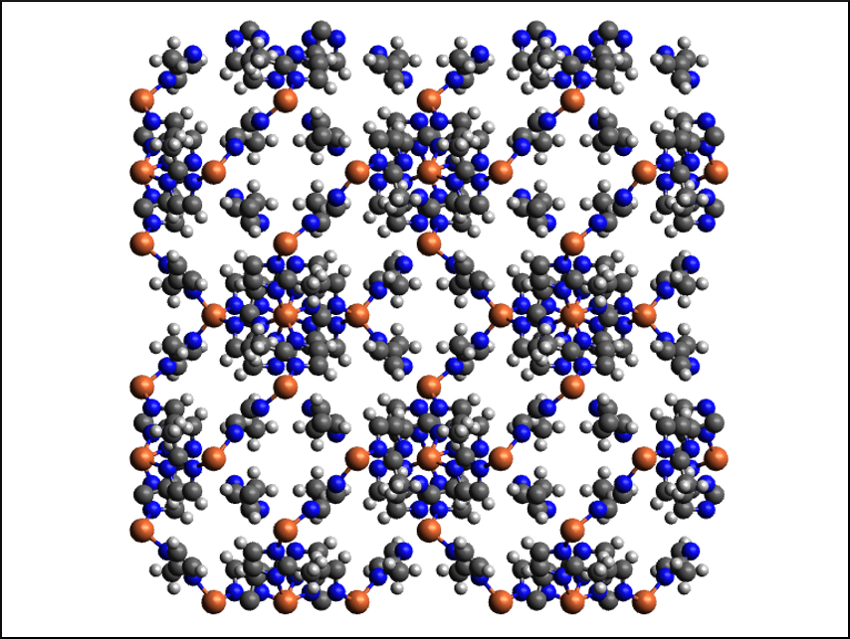Metal–organic frameworks (MOFs) consist of metal centers and organic linkers. They are porous materials with a wide range of applications. Their properties can be tuned by varying both the metal and the organic components. Zeolitic imidazolate frameworks (ZIFs), for example, are MOFs made from tetrahedrally coordinated metal centers and imidazolate ligands. ZIF-8 or Zn(Meim)2 (MeimH = 2-methylimidazole) is a very commonly used MOF. While the Co, Cd, Mg, and Mn analogues of ZIF-8 are known, the Fe(II) analogue has been challenging to prepare using solvent-based procedures.
Guillermo Mínguez Espallargas, Universidad de Valencia, Paterna, Spain, and colleagues have synthesized an Fe(II)-based ZIF-8 analogue using a solvent free-process. They reacted ferrocene as an iron source with 2-methylimidazole at 150 °C under vacuum in the presence of 4,4-bipyridine. The bypridine acts as a template, which blocks certain coordination sites on the iron and, thus, directs crystal growth. The team called the resulting material MUV-3 (MUV = Materials of University of Valencia).
MUV-3 has significantly different sorption properties for NO gas compared with ZIF-8. According to the researchers, this is due to chemisorption at the iron centers. The team also subjected MUV-3 to pyrolysis at 700 °C and found that an N-doped nanocarbon material was formed, which can act as a catalyst for electrocatalytic water splitting.
- Solvent-Free Synthesis of ZIFs: A Route toward the Elusive Fe(II) Analogue of ZIF-8,
Javier López-Cabrelles, Jorge Romero, Gonzalo Abellán, Mónica Giménez-Marqués, Miguel Palomino, Susana Valencia, Fernando Rey, Guillermo Mínguez Espallargas,
J. Am. Chem. Soc. 2019.
https://doi.org/10.1021/jacs.9b02686




